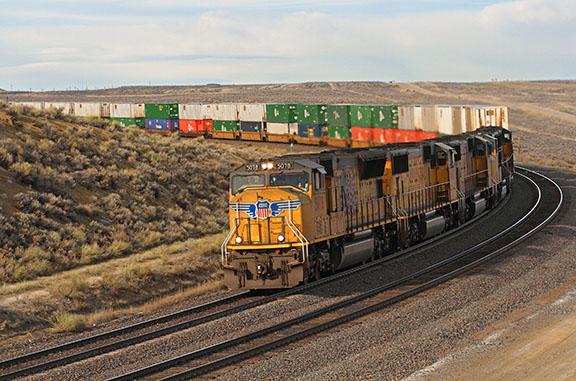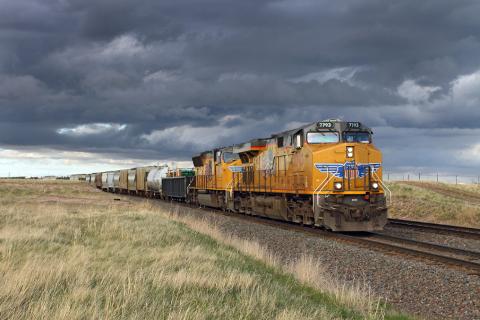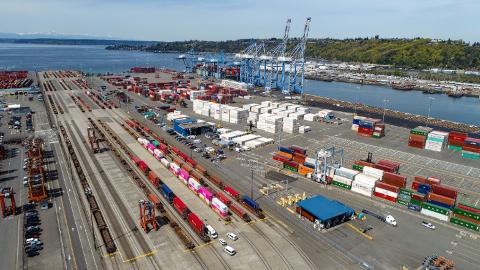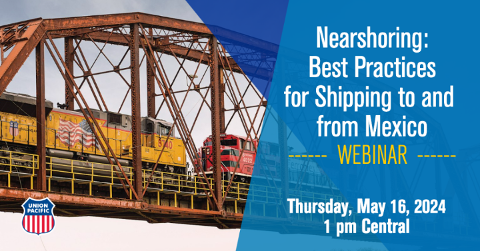You’ve probably heard of farm-to-table, but have you heard of “port-to-store”?
The port-to-store movement embraces the mindset that the success of your supply chain is about more than shipping from point A to point B — it’s a much bigger picture influenced by a multitude of factors even beyond transportation.
What Is “Port-to-Store”?

When you think about your supply chain, you might think about materials coming into your facility and then products going out to their destination. Let’s call that the 10,000-foot view. But what if we pull back to a 20,000-foot view and look beyond your piece of the supply chain puzzle? Depending on what you produce, the materials coming into your facility may have made their own complex journey before their arrival at your door. And what about the resulting products you ship out? Those could have a life beyond your customers, too. So why should you care about this bigger picture? Because what happens before and after your piece of the puzzle could have an impact on your business.
But there is an even bigger picture than that as well. The 30,000-foot view tells us that, beyond transportation, factors like international trade regulations, import and export tariffs, driver regulations, economic impacts of policy, currency valuations, environmental focus and human capital are all factors that could affect your supply chain.
Why Should I Care?
If you’re not aware of the myriad of factors affecting your supply chain, you might ask yourself, “What factors impact my cost of doing business?” or, “What influences my ability to compete and even grow or retain my market share?” When you have port-to-store visibility — when you’re seeing the bigger picture of the full supply chain and all of the factors that may influence it — you gain knowledge that empowers you to make the most effective decisions and gain a competitive edge.
What Does Port-to-Store Look Like in Real Life?

You’re probably thinking that all sounds great in theory, but what does port-to-store really look like in practice?
Let’s talk tennis shoes to illustrate the point. You might know where your favorite shoes are manufactured, and you certainly know where you like to buy them, whether online or in a brick and mortar store. But those shoes take a number of steps (pun intended) between the manufacturing line and your closet that you likely never even think about. Here’s why those steps matter: The price you pay for your favorite shoes, how quickly they land at your doorstep, and even the consistency of the condition they arrive in can be impacted directly by the supply chain.
Now, if you’re the owner of that tennis shoe company, having full port-to-store visibility allows you to make sure your customer is getting the price, fulfillment and quality they expect. But it also allows you to identify areas to improve processes, eliminate waste, maximize quality assurance and boost profit — all factors that help you beat the competition.
Let’s drill down even further and consider the factors outside of the tennis shoe company’s control that could impact productions costs, speed-to-market and sale price. Let’s say there’s an oil shortage. What does this mean for tennis shoes? It very well could mean the cost of rubber is about to increase. How about changes in overseas import tariffs? That right there might cause the cost of vinyl to spike. And how about a true-life example, like the ELD rule? That legislation has forced compliance with hours of service laws that made truck prices skyrocket. How would an understanding of the ELD rule and the resulting ripple effects help the tennis shoe company? It would allow them to properly budget for truck transportation (or seek more cost-effective alternatives, like rail).
When the tennis shoe company is aware of these factors, it empowers them to navigate the challenges to the best of their ability and stay competitive in their markets. But without that knowledge? It could negatively affect the cost to produce and distribute their tennis shoes — and worse, it opens the door for rival brands to have a competitive advantage.
How Do I Get in the Know?

If you’re ready to be a part of the port-to-store movement, you’ll want to think about two key topics: supply chain visibility and the factors beyond transportation that can influence supply chains.
In terms of port-to-store transportation visibility, technology is your best friend. Knowing exactly where your products are can help you ensure service, get ahead of glitches and accurately control inventory. Although real-time visibility along the entire supply chain and across modes of transportation is now a reality, the challenge is that oftentimes these data sets exist in a multitude of places — and drowning in spreadsheets isn’t always the best use of your time. Fortunately, there are options. For instance, Loup Logistics’s ShipmentVision technology provides a single data source for information across carriers all in one place, saving you time tracking down supply chain data while empowering you with accurate shipment information.
As for all of those factors outside of transportation that may influence your supply chain and your business? Doing your research is one option, but that can become cumbersome, too. An easier route is finding a transportation partner who knows the markets and how they influence your business. The best transportation professionals already see the bigger picture of what commodities are moving where, how markets influence each other, and how both local and global economic and legislative factors can affect them. Their knowledge is your shortcut to port-to-store visibility.
If you’re ready to join the port-to-store movement, we’re ready to get you up to speed. Get in touch and we’ll connect you with an expert who can help.
Related Article: Can B2C Supply Chains Teach B2B a Thing or Two?









